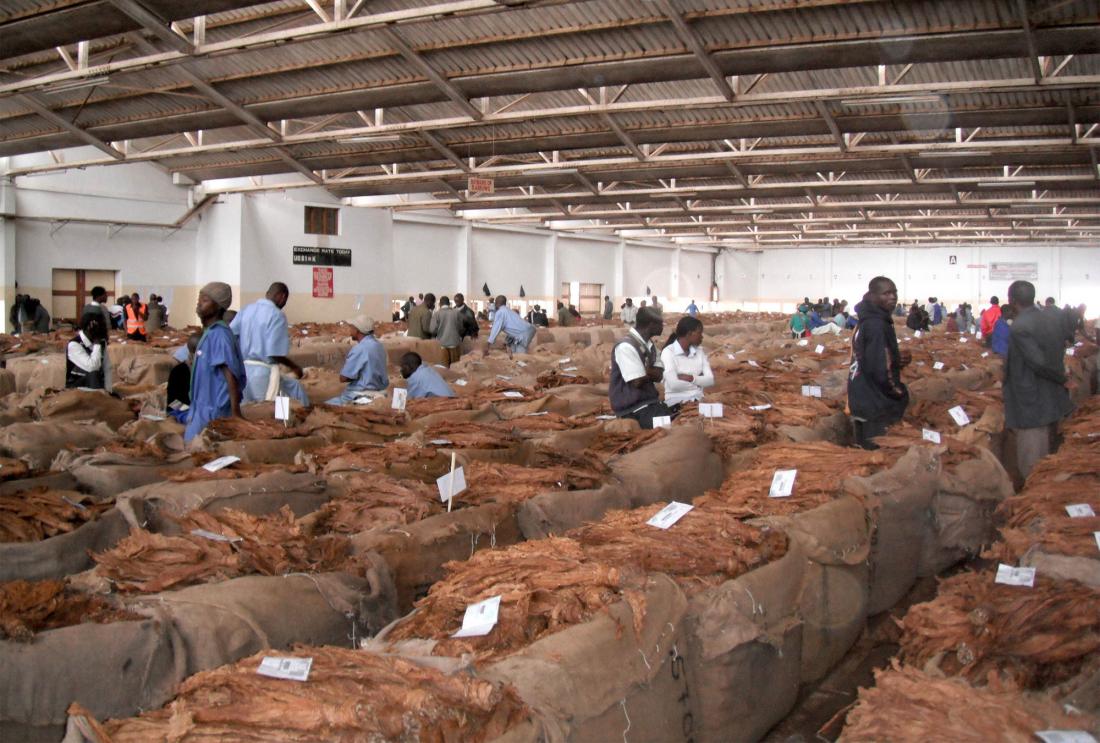Reducing Barriers to Savings in Rural Malawi
- Farmers
- Profits/revenues
- Savings/deposits
- Commitment devices
- Information
- Savings
Policy issue
On average, developing countries have fewer than 20 bank branches per 100,000 adults, and people deposit money at a rate one-third of that in developed countries.1 This lack of formal financial services, along with many other factors, may inhibit farmers and other entrepreneurs, particularly in rural areas, from increasing savings and investments, and smoothing household consumption. Financial services could help farmers to accumulate funds to purchase tools such as fertilizer which are helpful for increasing production. If barriers to financial services are reduced or eliminated by offering enhanced savings products, what is the impact on the use of different agricultural inputs, farm output, and overall well-being in rural farming households?
Context of the evaluation
Tobacco is one of Malawi’s primary exports, employing many of the country’s farmers. Income volatility influenced by macroeconomic forces can be particularly harmful to those farmers living near the poverty line, causing households to skip meals and forgo necessary healthcare expenses.
Opportunity International, an international NGO, opened the Opportunity International Bank of Malawi (OIBM) in 2002 with a license from the Central Bank of Malawi. OIBM provides financial services to the rural poor and has partnered with researchers and two private agricultural buyers, Alliance One and Limbe Leaf, to offer enhanced savings products to tobacco farmers.

Details of the intervention
The study assessed the impact of OIBM’s savings programs on the behavior and well-being of local farmers. Farmers were organized in farmers clubs, with an average of 10-15 members, by one of the agricultural buyers. In exchange for group loans in the form of fertilizer and extension services, administered by OIBM, the club allowed the commercial buyer to make the first offer on the national auction floor, essentially creating an exclusive relationship. Farmer clubs in this sample were randomly assigned to one of two savings account treatment groups or a comparison group. Clubs in the comparison group received information about the benefits of having a formal savings account. Clubs in the treatment groups received the same information about savings accounts and were also offered individual savings accounts into which proceeds, after loan repayment, would be directly deposited.
Farmers in the first treatment group were offered an “ordinary” savings account with an annual interest rate of 2.5%. Those in the second treatment group received the same individual savings account, in addition to a “commitment” savings account which allows farmers to specify an amount of money to be frozen until a specified date (e.g. immediately prior to the planting season, so that funds are preserved for farm input purchases).
To assess the impact of public information on financial behavior, farmer clubs in both treatment groups were randomly assigned to one of three raffle schemes providing information about club level savings. Raffle tickets to win a bicycle were distributed to participants on two occasions based on savings balances as of two pre-announced dates. One third of farmers received raffle tickets in private, one third received tickets in public when names and numbers of tickets were announced to the club, and one third was ineligible for the raffle.
Results and policy lessons
Savings Behavior: Twenty-one percent of farmers who were offered a commitment savings product (no raffle), made transfers to their account, while 16% of farmers who were offered the ordinary savings product (no raffle) had their harvest proceeds directly deposited into their individual account, and no farmers in the comparison groups received funds directly in an OIBM account. Overall, farmers in the six treatment groups deposited substantial amounts into their individual bank accounts; among farmers who were offered the commitment savings account, most of these deposits were made into the ordinary savings account.
Farmers in the commitment savings group had higher net savings during the pre-planting period, and the commitment savings treatment group overall withdrew more money during the planting season. This finding implies that these farmers were better able to save money and delay consumption until the lean season when food supplies from the last harvest were scarcer. Farmers in the ordinary savings group did not experience an increase in net savings during the pre-planting season, or an increase in withdrawals during the planting season, suggesting they were not able to smooth consumption as effectively.
Inputs, crop sales, and expenditures: In relation to those in the comparison group, farmers who were offered commitment savings accounts had more land cultivated, higher value of inputs, and greater value of harvest at a statistically significant level. These commitment savings farmers cultivated .42 more acres of land (compared to an average of 4.3 acres of land in the comparison group) and used 26% more inputs. This increase in land under cultivation and inputs used by the commitment savings group led to a 22% increase in value of crop output above the levels in the comparison group. Finally, farmers in the commitment treatment group increased total expenditures reported in the last 30 days by 17%. Overall, farmers in the ordinary savings group did not have outcomes that were different from those in the comparison group at a statistically significant level.
Evidence suggests that the positive results in the commitment savings group were derived from farmers keeping funds from their social networks. Though farmers in the commitment savings group received 89% of funds in their ordinary accounts, the existence of the commitment device may have allowed farmers to credibly claim that money was inaccessible. Results from the public and private raffle treatments were inconclusive.
[!1 Consultative Group to Assist the Poor/The World Bank, “Financial Access 2009: Measuring Access to Financial Services around the World,” https://www.cgap.org/gm/document-1.9.38735/FA2009.pdf (Accessed January 9, 2011).
Consultative Group to Assist the Poor/The World Bank. 2009. “Financial Access 2009: Measuring Access to Financial Services around the World,” http://www.gsma.com/mobilefordevelopment/wp-content/uploads/2012/06/fa2009_6.pdf (Accessed March 7, 2017).



